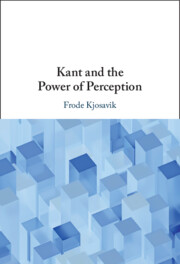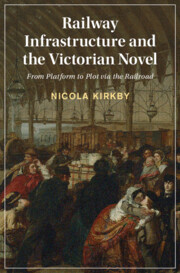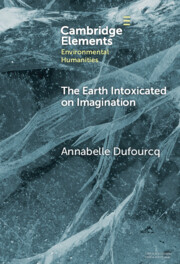Refine search
Actions for selected content:
222 results
Chapter 4 - From Perception to Imagination
-
- Book:
- Kant and the Power of Perception
- Published online:
- 27 November 2025
- Print publication:
- 11 December 2025, pp 126-160
-
- Chapter
- Export citation

Kant and the Power of Perception
-
- Published online:
- 27 November 2025
- Print publication:
- 11 December 2025
Maurizio Ferraris lecteur de Kant. Le nouveau réalisme et le renversement de l’architectonique kantienne
-
- Journal:
- Dialogue: Canadian Philosophical Review / Revue canadienne de philosophie , First View
- Published online by Cambridge University Press:
- 26 November 2025, pp. 1-17
-
- Article
-
- You have access
- Open access
- HTML
- Export citation
The Argument from Imagination
-
- Journal:
- Journal of the American Philosophical Association , First View
- Published online by Cambridge University Press:
- 11 November 2025, pp. 1-19
-
- Article
-
- You have access
- Open access
- HTML
- Export citation
1 - Memory and imagination
-
- Book:
- The Prompts You Need to Help You Write the Book You Want to Write
- Published online:
- 25 October 2025
- Print publication:
- 06 November 2025, pp 1-14
-
- Chapter
- Export citation
Introduction
-
- Book:
- Kierkegaard and the Structure of Imagination
- Published online:
- 26 September 2025
- Print publication:
- 16 October 2025, pp 1-20
-
- Chapter
- Export citation
Chapter 11 - Controlled Experiments
- from Part III - Kierkegaard and the Concept of Thought Experiment
-
- Book:
- Kierkegaard and the Structure of Imagination
- Published online:
- 26 September 2025
- Print publication:
- 16 October 2025, pp 176-192
-
- Chapter
- Export citation
Conspiracy Stories
-
- Journal:
- Canadian Journal of Philosophy , FirstView
- Published online by Cambridge University Press:
- 14 October 2025, pp. 1-19
-
- Article
-
- You have access
- Open access
- HTML
- Export citation
Chapter 11 - Leaders, Artists, Innovators
- from Part II - The New Psychology of Intergroup Relations
-
- Book:
- The Psychology of System Change and Resistance to Change
- Published online:
- 23 September 2025
- Print publication:
- 09 October 2025, pp 220-251
-
- Chapter
- Export citation
17 - Liturgy and the Proclamation of the Word
- from Part IV - Liturgy and the Life of the Churches
-
-
- Book:
- The Cambridge Companion to Christian Liturgy
- Published online:
- 19 September 2025
- Print publication:
- 09 October 2025, pp 299-316
-
- Chapter
- Export citation
Chapter 3 - Kant and the Idea of a Language in ‘the Senses’
- from Part I - Linguistic Implications of Kant’s Thought
-
-
- Book:
- Kant on Language
- Published online:
- 19 September 2025
- Print publication:
- 09 October 2025, pp 48-66
-
- Chapter
- Export citation
20 - Christology and Political Theology
- from Part IIIb - Christology and Philosophical Theology
-
-
- Book:
- The Cambridge Companion to Christology
- Published online:
- 15 September 2025
- Print publication:
- 02 October 2025, pp 340-358
-
- Chapter
- Export citation
Introduction
-
- Book:
- Railway Infrastructure and the Victorian Novel
- Published online:
- 12 August 2025
- Print publication:
- 28 August 2025, pp 1-23
-
- Chapter
-
- You have access
- HTML
- Export citation

Railway Infrastructure and the Victorian Novel
- From Platform to Plot via the Railroad
-
- Published online:
- 12 August 2025
- Print publication:
- 28 August 2025

The Earth Intoxicated on Imagination
-
- Published online:
- 31 July 2025
- Print publication:
- 28 August 2025
-
- Element
- Export citation
Chapter 5 - Healing Fictions: Narrative Transformations of the Self
-
- Book:
- Healing and the Invention of Metaphor
- Published online:
- 17 July 2025
- Print publication:
- 31 July 2025, pp 116-145
-
- Chapter
- Export citation
Through the surrealist looking glass: international theory, imagination, and the Anthropocene
-
- Journal:
- International Theory / Volume 17 / Issue 3 / November 2025
- Published online by Cambridge University Press:
- 08 July 2025, pp. 424-446
-
- Article
-
- You have access
- Open access
- HTML
- Export citation
9 - How Does Imagination Develop?
- from Section II - Middle Childhood
-
- Book:
- Child Development
- Published online:
- 19 June 2025
- Print publication:
- 12 June 2025, pp 137-149
-
- Chapter
- Export citation
7 - Fictions for a Future: ‘The Families We Choose’ in a Context of Ecosystem Collapse
-
- Book:
- Economics and the Family
- Published online:
- 08 May 2025
- Print publication:
- 05 June 2025, pp 260-270
-
- Chapter
- Export citation
Chapter 7 - Belief, Judgment, and Knowledge
-
- Book:
- Explaining our Actions
- Published online:
- 17 April 2025
- Print publication:
- 08 May 2025, pp 135-157
-
- Chapter
- Export citation
